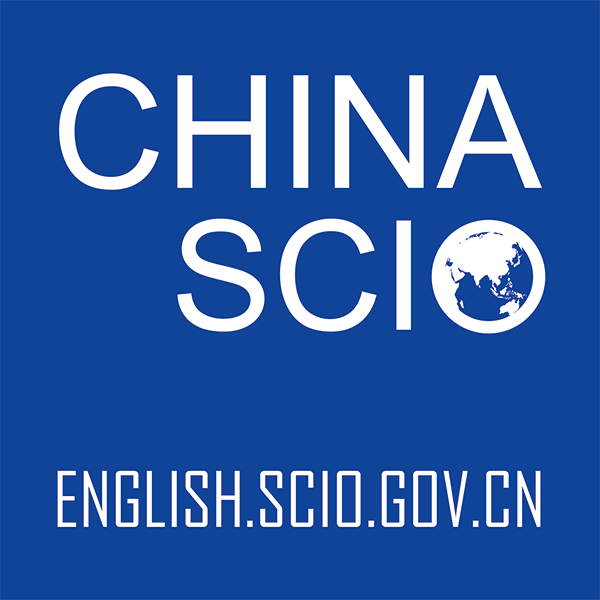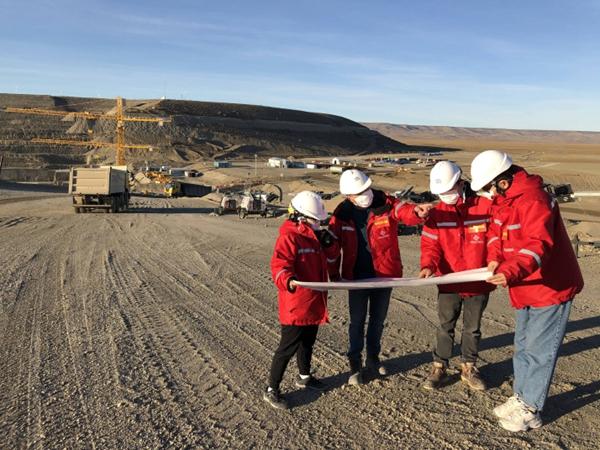


Since the Belt and Road Initiative was proposed in 2013, China's total non-financial direct investment in countries along the Belt and Road routes has reached $104.72 billion, according to the Ministry of Commerce.
Despite the novel coronavirus pandemic, China's non-financial outward foreign direct investment (OFDI) in these countries did not decline but went up 18.3 percent year on year in 2020 to reach nearly $18 billion. It accounted for 16.2 percent of the country's total, up from 13.6 percent in 2019.

No 'debt trap'
The increasing Chinese capital inflow into Belt and Road infrastructure projects did not cause any debt crisis in the host countries. This is because of the way the financing decisions are taken.
The participation is entirely voluntary. All projects are implemented by companies following market rules. Government-to-government lending is rare; most of the financing arrangements are based on market mechanisms, such as public-private partnership financing.
Finally, all the projects pay close attention to the return on investment, linked closely with the economic development needs at the national level and of the regions they serve.
Sri Lanka is a case in point. According to the Sri Lankan government, Chinese loans account for only 12 percent of the country's total foreign debt. The major part of the debt is composed of borrowing from the international market and loans from multilateral financial institutions.
The Hambantota International Port built in south Sri Lanka, a region that was among the poorest in the island nation, is often cited by critics as a project with negative implications for the country. The allegation stems from the arrangement that the port was leased out for management for 99 years. However, the operator, the Hambantota International Port Group, is a joint venture between the Sri Lankan government and China Merchants Port (CMP).
CMP acquired majority stakes in the project following market rules and is developing the area by establishing an industrial park, creating jobs and bringing in investment.
The China-Pakistan Economic Corridor (CPEC) in Pakistan, a landmark project under the Belt and Road Initiative, has also been attacked by some Western media. But 80 percent of the investment comes from China-Pakistan joint ventures, overwhelmingly outnumbering the 20-percent share of debt-based financing.
The Chinese government highlights debt sustainability in Belt and Road cooperation. In 2019, the Ministry of Finance issued a guideline on the procedures and standards for debt sustainability evaluation, risk analysis and management, and stress test to make the process clear and transparent.
When participating countries are unable to repay the debt to Chinese agencies, ways of resolution are sought through consultations.
Last year, to allay the debt tension in other developing countries due to the pandemic, China responded to the debt relief initiative undertaken by the Group of 20 (G20). It extended debt service relief, worth $1.35 billion, which benefited 23 countries. It was also the highest deferred amount among all G20 members, nearly 28 percent of the total debt relief of the bloc. Besides, the Chinese government also waived interest-free loans that were due to mature that year for 15 African countries.
Debt is an issue that has been present long before the Belt and Road Initiative was launched. It happens to all countries. One typical example was many European countries suffered a protracted debt crisis after the global financial crisis of 2008.
Since 2010, there has been a fast growth in global debts mainly because many countries resorted to super-sized stimulus measures to cope with the fallout of the crisis. For instance, the quantitative easing by the United States and EU led to surplus liquidity in the international financial market, and a large amount of capital flowed into developing countries.
Energy sustainability
The electricity consumption per capita in Belt and Road countries is less than 2,000 kWh each year, which is far less than the global average, indicating exceptional energy indigence. China is promoting energy transition in partnership with other participants to build a green, low-carbon and sustainable Belt and Road. Its basic stand is to generate more renewable energy and reduce carbon dioxide emissions.
Pakistan is a prime example. Power plants constitute more than 60 percent of CPEC projects. They are a mix of hydropower, solar, wind, nuclear energy and some coal-fired facilities.
There are several hydropower plants, such as the Karot Power Project on the Jhelum River in east Pakistan, which was the first investment project of the Silk Road Fund created to finance Belt and Road projects. Many wind power projects have already been put into use.
Additionally, China National Nuclear Corp. is building two nuclear power stations, K2 and K3, in Pakistan's commercial capital Karachi, using Chinese proprietary third-generation nuclear technology, including the Hualong One reactor. A 100-MW solar plant in eastern city Bahawalpur is also part of the CPEC power projects.
While China and Pakistan have collaborated on some coal-fired power plants, these projects have used advanced technologies to keep emissions and costs controlled.
In October 2020, soon after President Xi Jinping announced at the General Debate of the 75th Session of the UN General Assembly that China would bring its carbon emissions to a peak before 2030 and become carbon neutral before 2060, the Chinese government issued a climate financing guideline, which said coal-related construction projects would be strictly limited.
Months before that, the People's Bank of China, the Chinese central bank, and the National Development and Reform Commission updated the list of projects that are eligible for green bonds, scrapping those using traditional fossil energy.
China's carbon market is the second largest in the world, having traded over 400 million tons of carbon dioxide emission quotas since its inauguration.
A new stimulus
The Belt and Road Initiative is an important platform for supporting dual circulation, China's new development model consisting of the domestic economy as the main thrust of growth complemented by the global economy.
The domestic economy is the mainstay because China is a super-large market with high potential for domestic demand. The 1.4-billion population includes 400 million middle-income consumers as well as 130 million market players. Thus, there is ample market capacity for both consumption and investment.
Especially in recent years, consumption has become the major source of economic growth in China. In 2010, it contributed 49.3 percent to the GDP growth. The share increased to 55 percent in 2016, then to 55.8 percent in 2019. In 2020, there was a slight dip to 54.3 percent due to COVID-19, but in 2021, it is expected to rise.
Alongside the growth of consumption, domestic investment is showing a sustained rise, which means that domestic demand has grown stronger and can support economic growth.
The Chinese economy has been supporting global economic growth. On the one hand, Chinese imports and OFDI have kept growing while on the other hand, there has been a trend of increased Chinese exports and continuous inflow of foreign direct investment (FDI) into the country.
Even during the pandemic in 2020, China's foreign trade reached a record high of $4.65 trillion, up 1.5 percent year on year. Exports were worth $2.59 trillion, up 3.6 percent from 2019, while imports were $2.06 trillion, down 1.07 percent. The annual trade surplus grew dramatically at 26.9 percent to $535.03 billion.
China's OFDI increased to $132.94 billion in 2020, up 3.3 percent year on year, while FDI in China reached $144.37 billion, up 4.5 percent, making it the destination most attractive to international capital that year.
China and other Belt and Road participants have greatly expanded cooperation in trade, investment and industrial capacity. In 2020, China's trade with countries along the Belt and Road routes increased 1 percent. Particularly, trade between China and the Association of Southeast Asian Nations improved 7 percent.
The Regional Comprehensive Economic Partnership agreement signed in 2020 among 15 Asia-Pacific economies will also benefit China, one of the participants, as well as the entire region and other Belt and Road participating countries.
By Hu Biliang, executive dean and professor at the Belt and Road School, Beijing Normal University.
